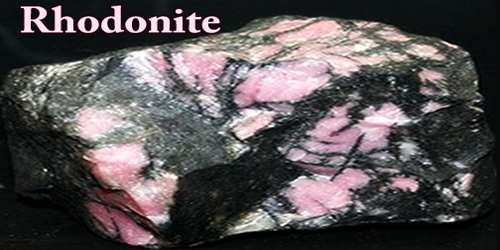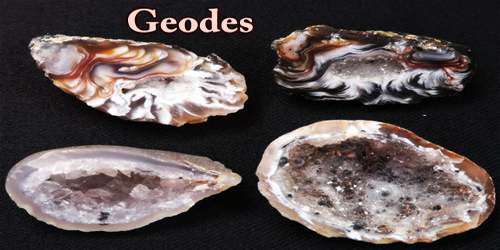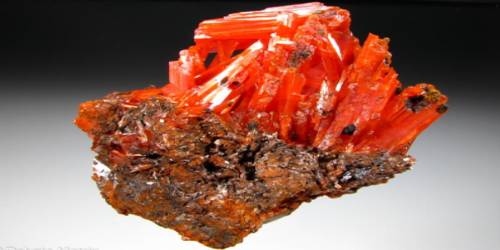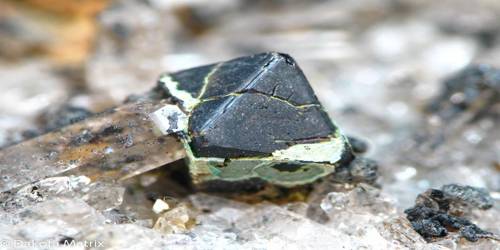Definition –
Rhodonite is a manganese inosilicate, (Mn, Fe, Mg, Ca)SiO3 and member of the pyroxenoid group of minerals, it is well known among collectors for its beautiful pink and red color. The red variety can be so deep red that it rivals the color of Ruby. The large crystals once found in Franklin, New Jersey, are classic rarities that make magnificent reference pieces.
The Rhodonite crystal meaning comes from the word rhodon, which means ‘rose’ in Greek. Like a field of flowers in full bloom and the color of sunsets, pink symbolizes unconditional love and the Rhodonite radiates at the highest level with its striking hue mixed with dark swirls. It is found in the Ural Mountains of Russia, where it is mined for ornamental uses, and in Sweden, New South Wales, California, and New Jersey.
Rhodonite is often associated with black manganese oxides which may occur as dendrites, fracture-fillings, or matrix within the specimen. Other names for rhodonite include “manganese spar” and “manganolite.”
The Rhodonite crystal stone meaning is cherished in the gemstone world for its stunning appearance that resembles pink marble. Its intense shade of pink contains shadowy inclusions of manganese oxide, giving it synergistic properties that combine the heart energizing power of the pink color ray with the grounding and centering effects of earth elements.

Occurrence and Properties of Rhodonite –
Rhodonite is an uncommon mineral. It is found in a few small deposits across the world. Sources of rhodonite include: Argentina, Australia, Brazil, Canada, England, India, Peru, Russia, and Sweden. In the United States it has been found in North Carolina, Colorado, New Jersey, and has been named as the state gem of Massachusetts.
The two most outstanding localities for this mineral, where incredible blood-red transparent crystals came from, are Broken Hill, New South Wales, Australia; and Morro da Mina in Conselheiro Lafaiete, Minas Gerais, Brazil. Two Peruvian localities in Ancash Department (formerly Huanco) that produced fabulously-colored Rhodonite are the Chiurucu Mine in Dos de Mayo Province, and the San Martin Mine in Huallanca.
Some of the largest and most classic Rhodonite crystals once came from Franklin, Sussex Co., New Jersey. Rough masses can still be found there in the Buckwheat Dump, but the fine crystals are long exhausted. The Sterling Hill Mine in nearby Odgensburg also produced some Rhodonite crystals, but not quite as magnificent as those at Franklin. Other U.S. localities are the Betts Manganese Mine, Plainfield (near Cummington), Hampshire Co., Massachusetts; Cumberland Hill, Providence Co., Rhode Island; and Jail Hill, Haddam, Middlesex Co., Connecticut.
Rhodonite is usually found in metamorphic rocks associated with other manganese minerals. It is also found in rocks that have been altered by contact metamorphism, hydrothermal and metasomatic processes. It is usually massive to granular in occurrence. Rarely, it is found as red triclinic crystals.
Rhodonite crystals often have a thick tabular habit, but are rare. It has a perfect, prismatic cleavage, almost at right angles. The hardness is 5.5-6.5, and the specific gravity is 3.4-3.7; luster is vitreous, being less frequently pearly on cleavage surfaces. The manganese is often partly replaced by iron, magnesium, calcium, and sometimes zinc, which may sometimes be present in considerable amounts; a greyish-brown variety containing as much as 20% of calcium oxide is called bustamite; fowlerite is a zinciferous variety containing 7% of zinc oxide.
Rhodonite’s diagnostic properties are its pink to red color, hardness, high specific gravity, perfect cleavage, and its close association with black manganese oxides. It is sometimes confused with rhodochrosite, which is softer and effervescent in hydrochloric acid, or thulite, which is usually not associated with black manganese oxides.
The inosilicate (chain silicate) structure of rhodonite has a repeat unit of five silica tetrahedra. The rare polymorph pyroxmangite, formed at different conditions of pressure and temperature, has the same chemical composition but a repeat unit of seven tetrahedra. Rhodonite is the official gemstone of the Commonwealth of Massachusetts.
Uses and Benefits of Rhodonite –
Rhodonite is a popular mineral among collectors. When it forms in large crystals or with a deep red color it is extremely sought after by collectors and can command very high prices. Rhodonite is also a minor gemstone, being cut and polished into cabochons, beads, and other ornamental objects. Rhodonite is also a minor ore of the element manganese in manganese deposits.
Today its only uses are as lapidary materials and as mineral specimens. High-quality crystals of rhodonite can sell for very high prices. Good massive pink- to red-colored material is used as an ornamental stone or gem rough.
Rare, well-formed, transparent crystals are highly sought after by mineral collectors. Damaged crystals of good quality are sometimes cut into faceted stones. Most of these are acquired by collectors because their cleavage and low hardness make them too fragile for use in jewelry.
Meditate with the Rhodonite crystal meaning and go deep within to clear away old patterns and uncover the true passions of our heart. Other heart chakra stones emanate a more gentle frequency of love but with the Rhodonite, get ready for a super-charged jolt of heart energy that’s strong enough to pick us up anytime we are feeling low in the romance department. At times, love might hurt but Rhondonite reminds us that painful emotions are temporary, like a thunderstorm that quickly blows over, leaving the greenery saturated with raindrops and the flowers ready to bloom once again.
Known for its powerful vibrations of pure love, the Rhodonite crystal healing properties are an excellent remedy for calming frayed nerves. The Xanax of crystal healing, the Rhodonite replaces anxiety, fear, and anger with warm and fuzzy emotions like self-worth, wellbeing, and stability, all the characteristics that make people feel like the real them. Sit quietly with the stone and let it infuse their spirit with the highest vibrations of love. Let the Rhodonite remind them to give happiness a chance because it looks so gorgeous on them.
Information Sources:
















